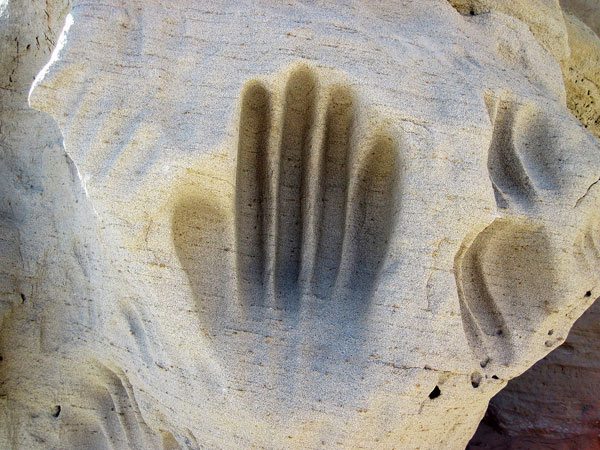
October 5, 2017; In These Times
Recent proposals that would affect rural environments have again fallen under the radar as other political issues are amplified, but, as Native Americans warn in an excellent article by Stephanie Woodard in In These Times, we may live to regret our inattention. American Indian nations have long served as a US dumping ground. For example, the Nevada nuclear test site is on Western Shoshone land. Between 1951 and 1962, the United States government performed 100 above-ground nuclear tests there, “causing countless cases of radiation poisoning and cancer of both the people and the land,” notes Colorado College student Helen Wick. Also related to the nuclear industry, in Gallup, New Mexico, many Navajo uranium miners died of lung cancer due to radiation exposure.
Of course, ultimately, what is done on American Indian land affects all of us. “Everything is connected,” observes Timbisha Shoshone Tribal Historic Preservation Officer Barbara Durham. And, alas, American Indian nations face a number of threats. Certainly, the Dakota Access Pipeline has gotten the most coverage, but it is not the only one.
For example, Department of Energy Secretary Rick Perry is giving an added push to bury nuclear waste under Yucca Mountain. Under this plan, an area revered as sacred by the Shoshone and Paiute would permanently store spent nuclear fuel and other radioactive material. The agency’s environmental impact statement, as Woodard points out, “admits that Yucca Mountain may be shaken by ‘ground motion’ and that ‘beyond-the-design’ events could collapse the waste facility”—none-too-subtle code for “earthquake risk.”
The Timbisha Shoshone government has long protested these plans. In 2015, Timbisha Chairman George Gholson wrote to the Department of Energy that the project “affronts the Timbisha’s way of life, is disrespectful to cultural beliefs, and constitutes an environmental justice infringement on the rights of a sovereign nation.” There is also a treaty that is supposed to protect Shoshone rights, notes Johnny Bob, a Shoshone medicine man. It is called the Treaty of Ruby Valley and it was signed in 1863. “We respect the treaty,” says Bob. “And we don’t want the nuclear waste.”
Other challenges abound, as Woodard details. For example, in April, Trump issued an executive order to “review” 24 national monument designations made in the past 20 years by presidents Clinton, Bush and Obama, including Bears Ears in Utah. Bears Ears is home to many American Indian sacred sites, but “oil and gas companies are pushing for new leases.”
Another site of struggle is around Bristol Bay in Alaska. As Woodard explains, Bristol Bay is “an expanse of Alaskan land and water that supports a $1.5-billion salmon fishery. The bay underpins the subsistence lifeways of surrounding tribes while providing some 14,000 jobs and pumping associated spending and taxes into the state and national economies.”
In 2014, the Environmental Protection Agency (EPA) found that “mining the headwaters of these river systems could cause harm to the valuable fishery in Bristol Bay.” Nonetheless, in May 2017, the Trump administration proposed “to withdraw [EPA’s] July 2014 Proposed Determination that would, if finalized, have imposed restrictions on the discharge of dredged or fill material associated with the potential ‘Pebble Mine’ in Alaska’s Bristol Bay watershed.”
Sign up for our free newsletters
Subscribe to NPQ's newsletters to have our top stories delivered directly to your inbox.
By signing up, you agree to our privacy policy and terms of use, and to receive messages from NPQ and our partners.
Alannah Hurley, the Yup’ik executive director of United Tribes of Bristol Bay, which represents 14 American Indian nations, emphasizes that, “Nothing has changed about the project and the objections to it.” Hurley has had to spend her time encouraging communities to (again) submit comments to the EPA. “We want to make sure our voices are heard,” says Hurley.
Woodard adds that:
Robin Samuelson, a Curyung tribal member and president of Bristol Bay Economic Development Corporation, has vowed to fight the mine to his last breath. At that point, he says, his grandchildren will take up the cause: “And their kids are going to fight Pebble. We and Bristol Bay will never give up.”
Yet another threat is posed by the removal of restrictions on the use of lead-based ammunition (and fishing-line sinkers) on lands managed by the Fish and Wildlife Service (FWS). Woodard notes that, according to the nonprofit Center for Biological Diversity:
In the United States, an estimated 3,000 tons of lead are shot into the environment by hunting every year, another 80,000 tons are released at shooting ranges, and 4,000 tons are lost in ponds and streams as fishing lures and sinkers—while as many as 20 million birds and other animals die each year from subsequent lead poisoning.
And, again, American Indian nations pay the price. For example, birds at a Zuni Pueblo eagle sanctuary in the New Mexico desert have been found to suffer lead-related nervous-system damage, ingesting lead by consuming the “carcasses of animals that have been shot with lead pellets.” As Nonprofit Quarterly has noted, lead is highly toxic for humans too, affecting over 535,000 American children, according to a 2013 Centers for Disease Control study. As Yurok Nation wildlife biologists point out, “[Lead] can degrade a person’s vascular, renal, nervous, and reproductive systems,” with children especially vulnerable to the effects.
OJ Semans, the Rosebud Sioux executive director of Four Directions, a 501(c)(4), spends his time fighting to protect American Indian voting rights. Of course, barriers to American Indian voting deeply affect the community’s ability to advance environmental justice and other interests. Semans says, “I wake up every morning glad I can do this work. It’s a struggle for equality for us Natives, of course, but for everyone else as well. People of every description have lived in, worked in or married into our Native communities. When we win, everyone wins.”—Steve Dubb













